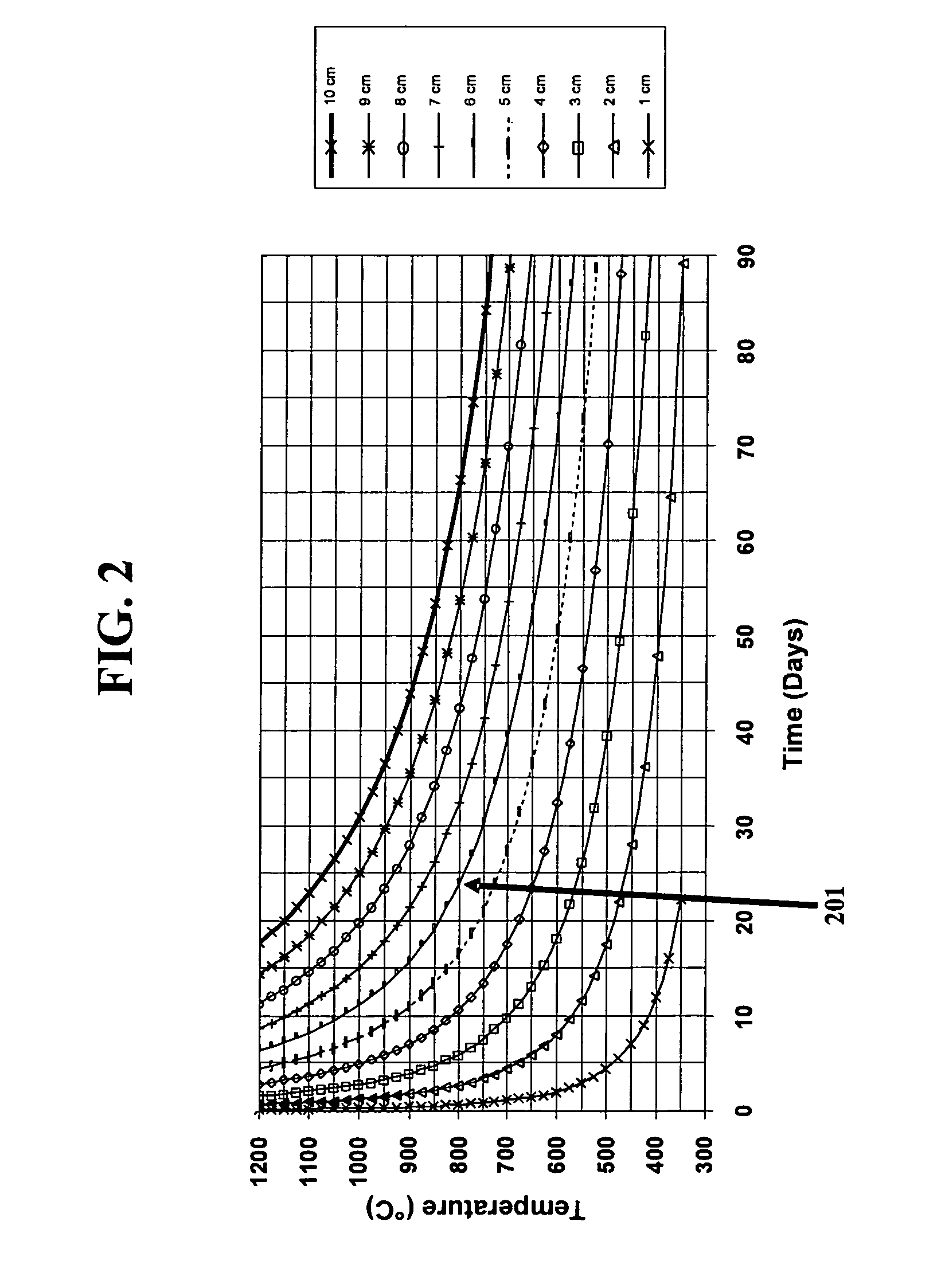Fused silica glass and method for making the same
a technology of fused silica glass and silica glass, which is applied in the direction of manufacturing tools, photomechanical equipment, instruments, etc., can solve the problems of invariable hydrogen loading time, become one of the most time-consuming and expensive steps in the silica glass manufacturing process, and achieve low refractive index variation, and low level of birefringence variation
- Summary
- Abstract
- Description
- Claims
- Application Information
AI Technical Summary
Benefits of technology
Problems solved by technology
Method used
Image
Examples
example 1
[0145]Comparisons are made here between the first method of the present invention which utilizes a uniform partial pressure of hydrogen and the second method of the present invention which utilizes variable partial pressures of hydrogen. Hydrogen loading using the first method, as was discussed in section A above, results in a single minimum at the center of the lens blank. Other examples of calculated hydrogen gradients are presented in TABLE III below with one example of a hydrogen gradient shown in FIG. 8 for specific cylindrical glass geometry of 270 mm diameter×60 mm thick disc hydrogen loaded at 600° C.
[0146]
TABLE IIILoading time at full[H2][H2]Max ExternalMaxtemperatureEdgeCenter[H2]Gradient(Minutes)(Days)(×1017 molecules / cm3)100,000691.00.8310.08150,0001031.00.9310.03200,0001381.00.9810.01
example 2
[0147]This example uses the second method of the present invention (variable H2 partial pressure). Likewise, it assumes loading a 270 mm×60 mm silica disk at 600° C. The parameters and results are shown in TABLE IV. TABLE IV shows that the second method of the present invention can achieve the same Δ[H2] of ˜0.15×1017 molecules / cm3 in around half the time needed for the first method in this particular example.
[0148]
TABLE IVLoading time at [H2][H2]Max External Max [H2]full temperatureMaxMinΔ [H2]ConcentrationGradient(Minutes)(Days)(×1017 molecules / cm3)50,000351.250.960.2950.1550,000351.040.890.1580.07
[0149]FIG. 9 shows an example of a distribution achieved by the second method of the present invention which utilizes a single crossover pressure variation. The pressure profile of the single crossover pressure variation used is illustrated in FIG. 10. FIG. 11 shows an example of final H2 concentration distribution by the second method of the present invention which utilizes a double cro...
example 3
[0152]The experiment in this example was performed to validate the concept that varying the surface concentration of hydrogen during loading could significantly reduce loading time. Two cases were examined. Case I refers to glass that is loaded by “conventional loading”. Here, conventional loading is defined as a constant surface concentration of H2 during loading. FIG. 13 shows model predictions for loading a 20×25×100 mm3 bar at 350° C. for 89.2 days at constant loading partial pressure of H2. The results show that after the 89.2 days, a surface concentration of 0.7×1017 molecules / cm3 H2 would be expected on the surface of the glass while 0.59×1017 molecules / cm3 H2 would be expected in the sample center. The model prediction is based on the following equation:
DH2=(5.65×10−4)·exp(−5220 / T)(cm2 / sec)
where DH2 is the diffusivity of H2 at temperature T (in Kelvin).
[0153]Case II refers to an example of accelerated loading procedures which vary the surface concentration of H2 during loadi...
PUM
| Property | Measurement | Unit |
|---|---|---|
| partial pressure | aaaaa | aaaaa |
| temperature | aaaaa | aaaaa |
| partial pressure | aaaaa | aaaaa |
Abstract
Description
Claims
Application Information
 Login to View More
Login to View More - R&D
- Intellectual Property
- Life Sciences
- Materials
- Tech Scout
- Unparalleled Data Quality
- Higher Quality Content
- 60% Fewer Hallucinations
Browse by: Latest US Patents, China's latest patents, Technical Efficacy Thesaurus, Application Domain, Technology Topic, Popular Technical Reports.
© 2025 PatSnap. All rights reserved.Legal|Privacy policy|Modern Slavery Act Transparency Statement|Sitemap|About US| Contact US: help@patsnap.com



